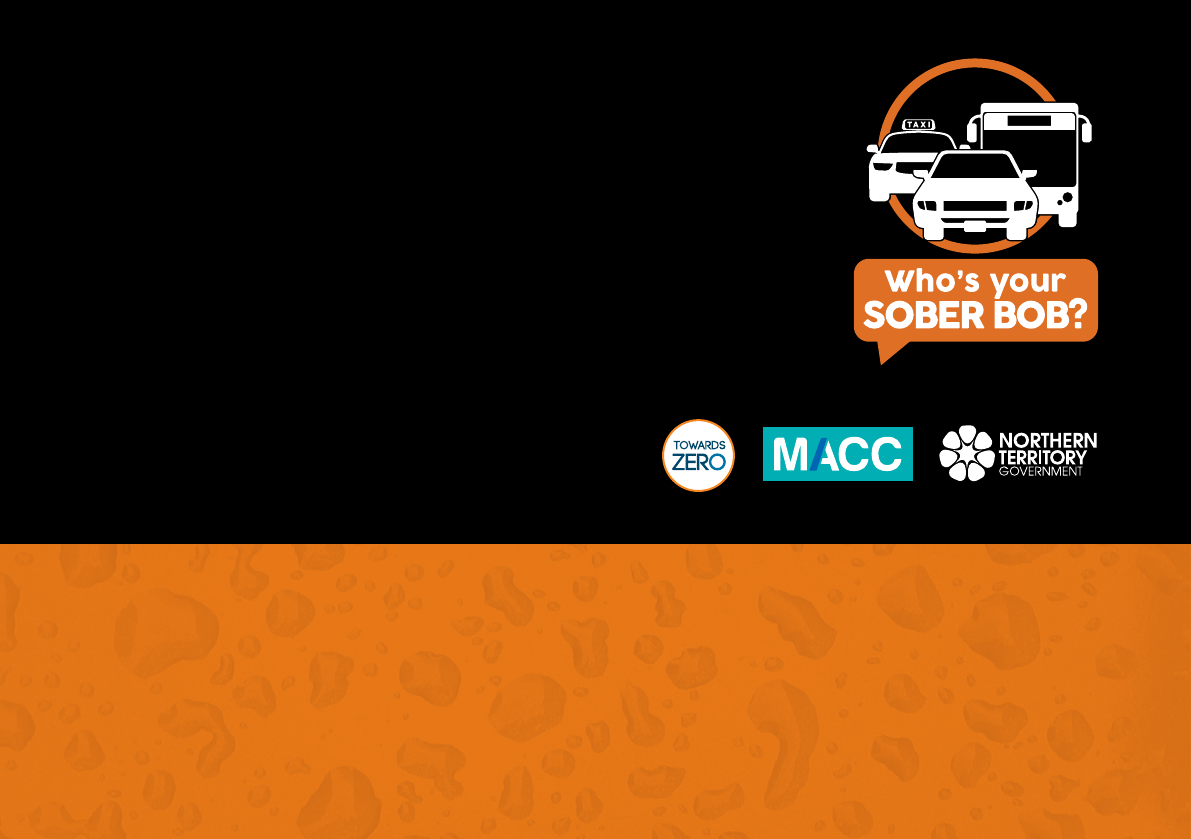
2 nt.gov.au
licences
WHO’S YOUR SOBER BOB?
Sober Bob is someone willing to get you home safely: a mate, bus driver, taxi driver,
mum, brother, girlfriend or uncle. Sober Bob is about planning how you get home
before you go out. Remember to ask yourself, ‘Who’s Your Sober Bob?’.
towardszero.nt.gov.au
If you’re going to
drink, don’t drive.

3
section 2. licences
MOTOR VEHICLE REGISTRY road users’ handbook
Your responsibilities are clearly stated throughout this
handbook, and it is expected that you will use any vehicle
that you operate with safety, efciency, courtesy and
common sense at all times.
Having a driver’s licence will increase your opportunities
for employment and recreational activities and can also
give you independence. However, do not forget that
it will also bring increased responsibilities. If you lose
your licence by failing to meet your responsibilities, the
consequences could be serious and many opportunities
will disappear.
Obligations of licence holders
Think of your licence as a ‘contract’ or an agreement
between you as a driver and the rest of the community.
The Motor Vehicle Registry and the Northern Territory
Police administer this contract.
Your licence is also an important identity document and
should be kept safe at all times. Do not abuse your licence
or allow it to be misused. There are heavy nes if you
fraudulently alter or use a licence, if you lend a licence
to another person, or if you allow a licence to be used by
another person.
Northern Territory roads are provided for drivers to use if
they meet certain conditions.
Drivers must:
• show that they understand the road rules, most of which
are written in this handbook in plain English
• show the skills necessary to drive safely
• obey the laws and drive responsibly
• pay a licence fee, which goes towards the administration
of the licensing system
• show that they understand the community’s concerns to
reduce the impact of trafc on the environment and to
use the road system efciently.
The contract between you as a driver and the
community can be broken by trafc offences that
cause inconvenience, costs or suffering to others.
These offences carry penalties such as nes, licence
cancellation, disqualication or suspension. In extreme
cases, the offence could lead to a prison sentence.
The licensing system
The Northern Territory licensing system helps to make
travel on our roads safer for all road users. It provides
rules and conditions for licence holders and penalties
for drivers who do not meet their responsibilities. The
licensing system also ensures that licence holders have
the required knowledge and skills to safely operate the
vehicle they are licensed to drive or ride.
To drive on public roads in the NT you must be licensed
and have the correct licence class for the type of vehicle
you are driving.

4 nt.gov.au
To legally drive on public roads in the NT:
• you must have the right class of licence for the vehicle
you are operating
• you must hold a current NT licence if you are an
NT resident
• you must hold a current interstate licence if you are
visiting from interstate
• if you are visiting from overseas, you must hold a
current licence from your country, and if your licence
is not in English you must also carry an International
Driving Permit or an ofcial English translation of your
overseas licence.
You cannot drive on public roads in the NT if you have:
• a licence that is expired
• a licence that has been cancelled or suspended
• had your driving privileges withdrawn in the
Northern Territory
• been disqualied from driving by a court of law in
Australia or overseas.
Heavy penalties apply for driving a
vehicle without a licence.
If you have been in the NT for more than
three months and wish to continue to
drive, you must apply for an NT licence.
When your licence is checked
Police can check your licence at any time, and they will
also check that you have the correct licence when:
• you are involved in a crash, whether you were at fault
or not
• you have been stopped because you committed a
trafc offence
• you have been stopped for a random breath test either
by a stationary breath testing unit or by a mobile breath
testing unit.
C class graduated licensing scheme
The Northern Territory has a graduated licensing scheme
for new drivers. The scheme prepares inexperienced
drivers for a lifetime of safe and efcient driving.
New drivers are required to pass both the learner and
provisional licence testing stages before obtaining a
full licence.
A new driver will progress through four stages to obtain
a full licence.
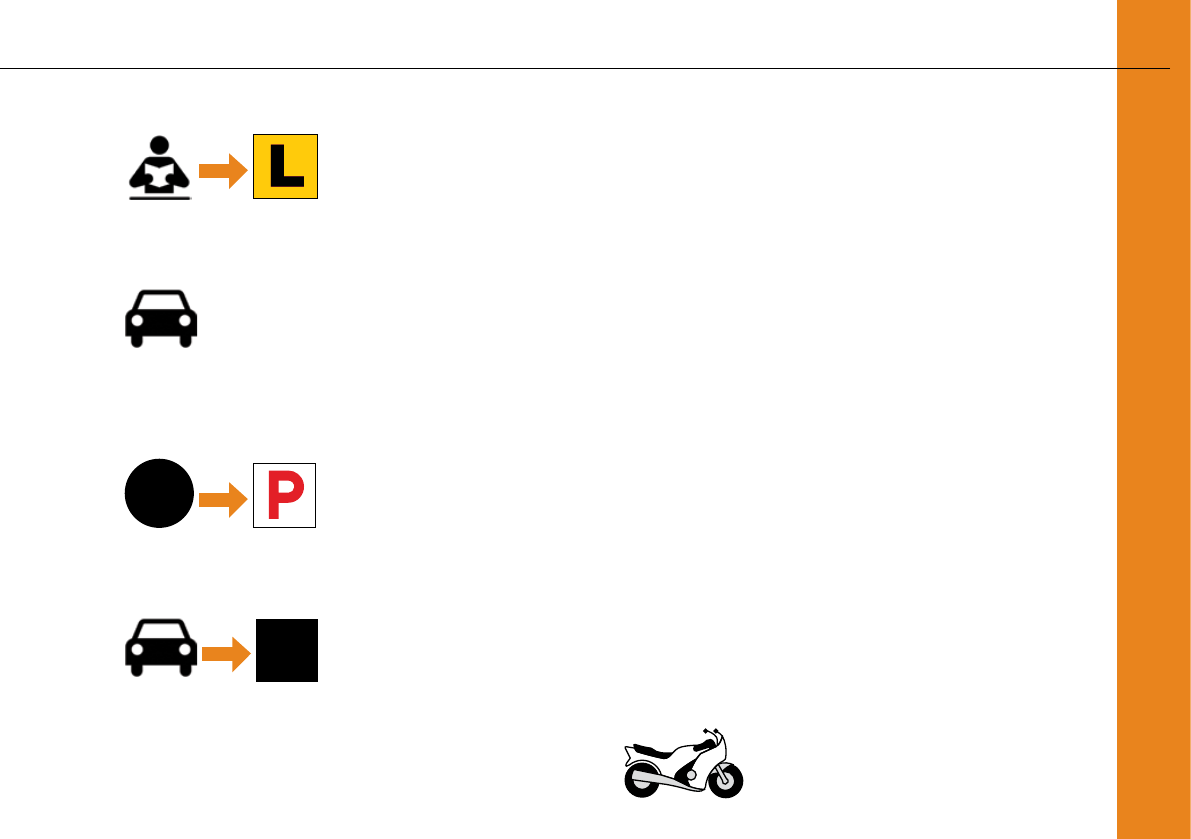
5
section 2. licences
MOTOR VEHICLE REGISTRY road users’ handbook
Stage 1
Pass the driver knowledge test to obtain a learner licence.
Stage 2
Practice driving, with supervision, for a minimum of six
consecutive months.
Stage 3
DRIVING
TEST
Pass the driving test to obtain a provisional licence.
Stage 4
FULL
LICENCE
If you are under 25 years old, you will need to hold your
provisional licence for at least two years before you can
upgrade to a full licence. If you are 25 or older, your
provisional licence needs to be held for at least one year.
If your licence is suspended or cancelled during your
provisional period, you will need to spend a longer time
with a provisional licence once your suspension is lifted,
or you will need to start the provisional period again if your
provisional licence is cancelled.
At the end of your provisional period you can apply for a
full licence. Phone the MVR on 1300 654 628 or renew
your licence online using MVR Quick Pay at nt.gov.au (you
may be eligible for a free 10 year licence).
Remember that learning to drive well requires lots of
experience that will only come with time and lots of
practice in different driving situations and conditions.
Use every time you drive as an opportunity to learn, and
try to continue practicing with an experienced driver as
often as you can.
Licence classes
The NT has different licence classes for the various types
of motor vehicles that use Northern Territory roads.
To be allowed to drive or ride you must hold the correct
licence class for that vehicle.
The list below shows the type of vehicle you can drive
under each class of licence.
Rider (R)
• Any motorcycle or motor tricycle.
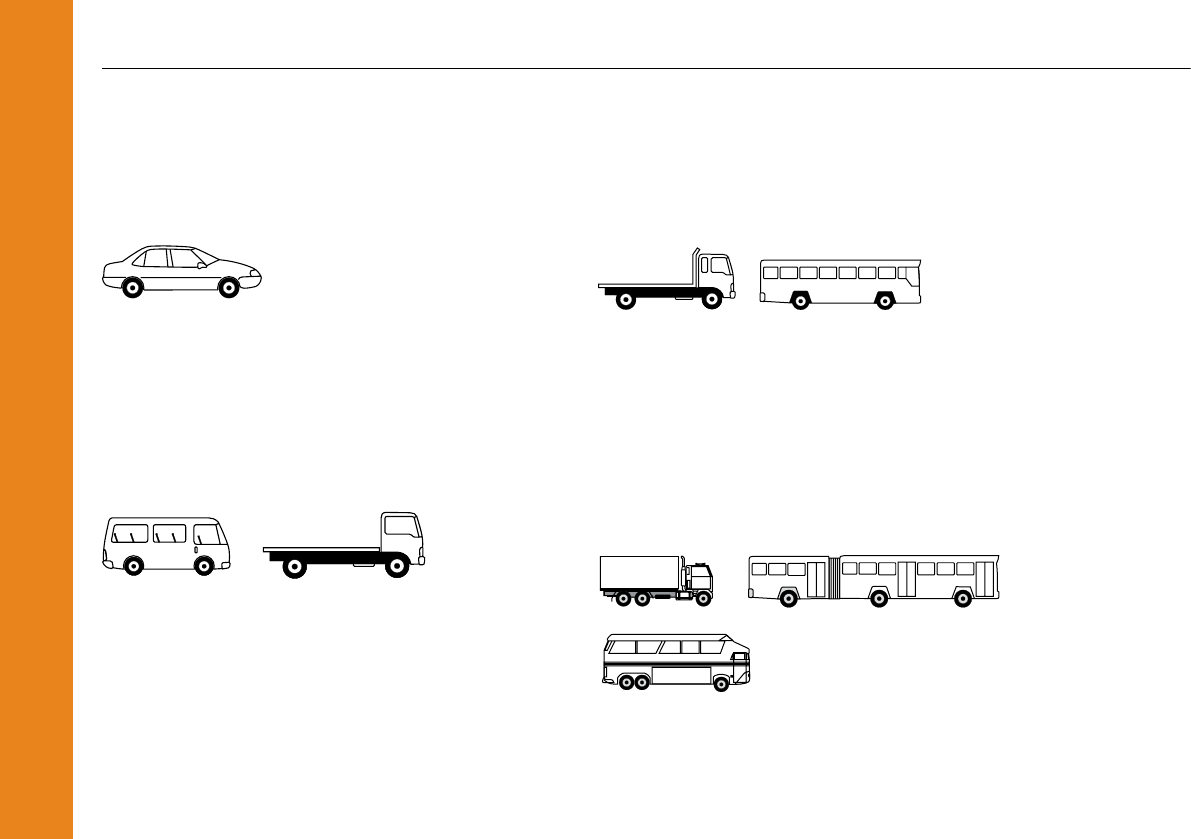
6 nt.gov.au
Car (C)
• A vehicle that is no more than 4.5t Gross Vehicle Mass
(GVM).
• Holders of a C class licence may also drive some civil
construction and agricultural vehicles.
Light Rigid (LR)
• A vehicle that is more than 4.5t (GVM) but no more than
8t (GVM).
• Can tow a trailer of no more than 9t (GVM).
• Holders of an LR class licence can also drive any
vehicle allowed by a C class licence.
Medium Rigid (MR)
• A vehicle that has two axles and is more than 8t (GVM).
• Can tow a trailer of no more than 9t (GVM).
• Holders of an MR class licence can also drive any
vehicle allowed by an LR or C class licence.
Heavy Rigid (HR)
• A rigid vehicle that has three or more axles, more than
8t (GVM).
• Can tow a trailer of no more than 9t (GVM).
• Can drive articulated buses.
• Holders of an HR class licence can also drive any
vehicle allowed by an MR, LR or C class licence.
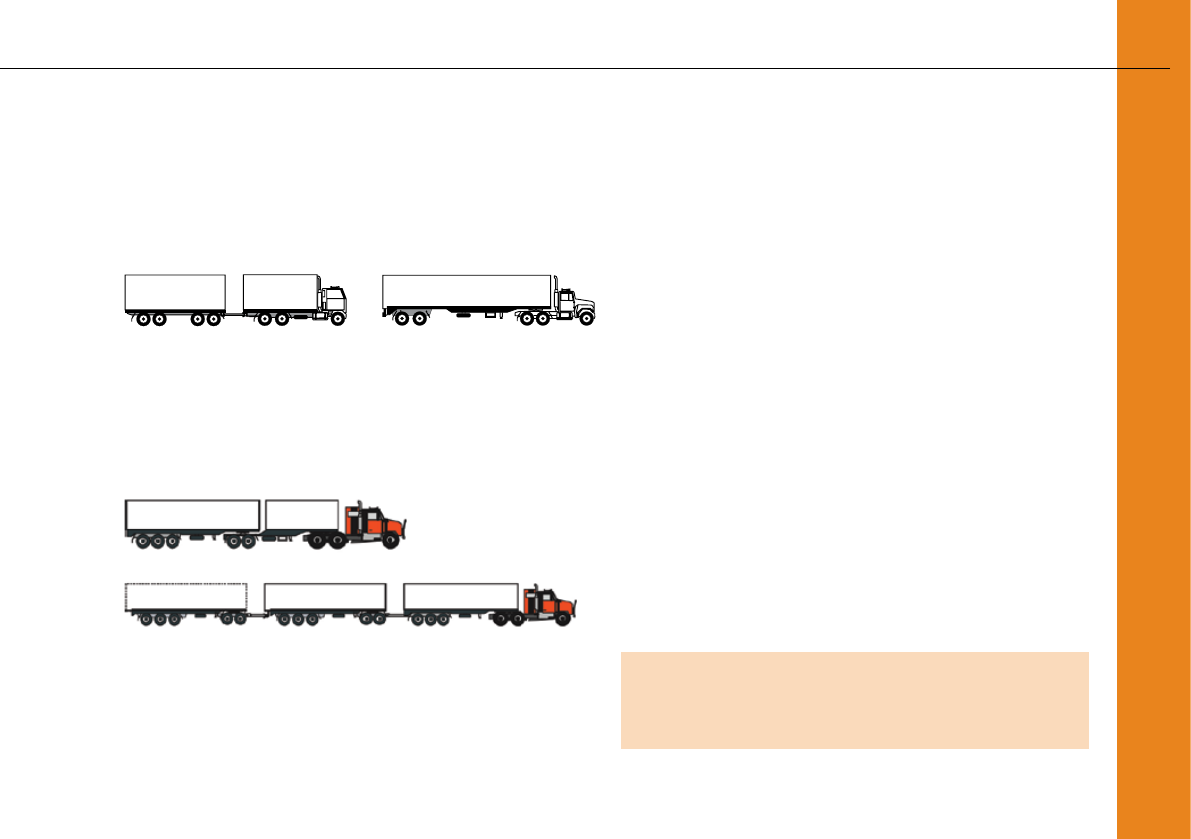
7
section 2. licences
MOTOR VEHICLE REGISTRY road users’ handbook
Heavy Combination (HC)
• A prime mover attached to a semi-trailer (plus any
unladen converter dolly).
• A rigid vehicle towing a trailer of more than 9t (GVM).
• Holders of a HC class licence can also drive any vehicle
allowed by a HR, MR, LR or C class licence.
Multi Combination (MC)
• Any B-double or road train.
• Holders of a MC class licence can also drive any vehicle
allowed by a HC, HR, MR, LR or C class licence.
Medical fitness to hold a licence
All drivers and riders must be medically t to drive a
motor vehicle and are subject to personal and legal
responsibilities and liabilities.
In reality, very few conditions prevent the issuing of a
driver licence.
Northern Territory laws require all drivers or intending
drivers to notify the Registrar of Motor Vehicles if they
have any medical condition (including disability, mental
illness or eyesight) that could affect their ability to safely
and legally drive motor vehicles. Health professionals
are also required to notify the Registrar if they believe
a patient's medical condition could affect their ability to
drive a motor vehicle.
The MVR is responsible for issuing, renewing, suspending
or cancelling a person’s licence (including a conditional
licence), and decisions are based on a full consideration of
relevant factors relating to health and driving performance.
If you have any questions about medical tness to hold
a licence, please contact the MVR on 1300 654 628 or
consult your health professional for advice.
A medical condition does not necessarily
mean that you cannot be licensed.

8 nt.gov.au
Drivers with medical conditions
When you apply for a licence, you must state whether your
medical condition could affect your driving. Depending on
the condition, you may need to have an assessment of
your ‘tness to drive’ carried out by a health professional.
Certain medical conditions could require that you complete
an on-road driving assessment with an Occupational
Therapist who will assess your ability to drive in relation to
your medical condition.
Many drivers with medical conditions nd that they are
allowed to drive, with conditions applied. For example,
it is quite common for some drivers’ licences to have a
condition that they must wear glasses while driving or
that they can only drive automatic vehicles.
Driving and dementia
The gradual and permanent loss of mental functions
caused by dementia will, over time, reduce a driver’s
ability to drive safely. In the early stages of this
condition, doctors, family and friends should discuss
alternative methods of transport for drivers showing
signs of dementia.
Each person with dementia will have a different pattern
and timing of their reduced ability to drive as their
condition progresses, and some people may not need
to stop driving immediately. Individual assessment and
regular review are important, even though it is difcult
to predict the point at which a person will no longer be
capable of driving safely.
Organ donation
The place to register your intention to be an organ donor
is the Australian Organ Donor Register (AODR).
Organ donor information is available at www.
humanservices.gov.au or call 1800 777 203 for a
registration brochure.
If you would like more information before making
your choice, please contact Donate Life NT (the
organ donation agency for the Northern Territory) at
www.donatelife.gov.au or phone 08 8922 8349.

9
section 2. licences
MOTOR VEHICLE REGISTRY road users’ handbook
How to obtain a class C learner licence
Become an MVR customer
The rst step to getting your class C learner licence is to
become an MVR customer. You will need to:
• be at least 16 years of age
• provide evidence of your identity (prove who you are)
• provide evidence of your residency (prove that you live
in the NT)
• have your photo taken by an MVR ofcer.
For information about evidence of identity and residency
requirements, please contact MVR on 1300 654 628 or
visit the nt.gov.au website.
To obtain a class C learner licence in the NT you
can either:
• pass a Driver Knowledge Test (DKT) at an MVR ofce
• or, enrol in the DriveSafe NT program.
Applying for a learner licence
To apply for a learner licence at MVR you must:
• be an MVR customer
• be at least 16 years of age
• pass an eyesight test
• pass a knowledge test
• pay the learner licence fee.
You can also apply for a learner licence through the
DriveSafe NT program. For more information visit the
drivesafe.nt.gov.au website.
Renewal of a learner licence
If your learner licence is nearing expiry and you are not
ready to sit the driving test to obtain a provisional licence
you can re-sit the theory test to renew your learner licence
for another two years. If you wait until after your learner
licence has expired to re-sit the theory test, you will also
need to wait another six consecutive months before you
can sit the driving test.
Driver Knowledge Test
Passing the Driver Knowledge Test (DKT) will prove
that you have an understanding of the road rules in the
Northern Territory.
To prepare for the DKT you should study this handbook
carefully; all the information you need to pass the test is
covered in it.
You can test your knowledge of the road rules by taking
the practice DKT on the mvr.nt.gov.au website.
When studying this guide, be careful not to skip any
sections. All the information in this guide is relevant to you.

10 nt.gov.au
Where to go for the Driver Knowledge Test
A DKT can be taken at any MVR ofce up to one hour
before the MVR ofce closes.
How the Driver Knowledge Test works
The DKT consists of 30 questions, randomly selected from
a question bank of approximately 300.
During the test you are not allowed to:
• receive any assistance
• refer to any resource materials that would help you
to pass the test (such as this handbook, other books,
notes, websites, mobile phones etc)
• use a mobile phone or other communication device
• speak or signal to any other person (except the registry
ofcer when necessary)
• leave the test area.
People caught cheating will fail the test immediately and
be banned from taking another DKT for two weeks.
Unsuccessful Driver Knowledge Test
If you do not pass the DKT, you can try again as many
times as you need to in order to pass it.
The next time you attempt a DKT you will be given a
different set of questions to answer.
You should only re-attempt the test when you are ready.
To check if you are ready, test your knowledge by taking
the practice Driver Knowledge Test on the
mvr.nt.gov.au website.
Applicants requiring assistance
Special needs
If you have special needs, such as a physical or mental
impairment, you or your representative should discuss
your needs for taking the test with the MVR before booking
a DKT. This allows time for the necessary arrangements
to be made for you on the day of the test.
DifcultyreadingandwritingEnglish
If you have difculty reading or writing in English, you
can choose to attempt a verbal (spoken) test, with
or without an interpreter. You can book a verbal test
through any MVR ofce in urban areas.
An interpreting service is provided by Interpreting and
Translating Service NT (ITSNT).
If you are not an Australian resident or citizen, you may
need to pay a fee directly to ITSNT for this service.
Arrangements for verbal testing services can be made by
calling 1300 654 628.

11
section 2. licences
MOTOR VEHICLE REGISTRY road users’ handbook
DriveSafe NT
DriveSafe NT is a driver education and licensing program
across the Northern Territory.
DriveSafe NT equips Territorians with essential knowledge
of road rules, safe driving practices and attitudes.
It provides access to professional, modern driver training,
supervising drivers and works towards being safer on our
roads.
DriveSafe NT gives participants various subsidies
towards gaining their learner licence and progressing to a
provisional licence, including:
• course materials
• classroom based theory education
• licence fees
• test fees
• subsidised driving lesson e-vouchers
• St John Ambulance NT online rst aid course –
rst@scene
• access to online tools to track and manage progress
Enrolment fees apply.
DriveSafe NT has been designed so that all elements of
the program can be completed over six-months in line
with the current minimum learner licence period. However,
participants can take up to two years to complete the
program.
DriveSafe NT participants are encouraged to take their
time and get as much driving practice as they can before
continuing to their provisional licence and completing the
program.
You can still enrol in DriveSafe NT if you already have
your learner licence.
For more information about the DriveSafe NT program,
visit www.drivesafe.nt.gov.au, call 1800 121 411 or email

12 nt.gov.au
Licence restrictions for class C learners
As well as complying with all road rules and trafc laws,
there are some additional requirements for class C learner
licence holders:
• Blood/Breath Alcohol Concentration (BAC/BrAC):
Your BAC/BrAC must be zero. This means you must
not have any alcohol in your system when you drive
a vehicle.
• Displaying L plates: L plates must be clearly displayed
on the front and back of the vehicle. If towing a trailer,
an L plate must also be displayed on the back of
the trailer.
• Licence: You must carry your learner licence at all times
while driving.
• Licence class: You can only learn to drive the type of
vehicle allowed by your licence class.
• Mobile phone: You must not use any function of a
mobile phone while driving, including hands-free or
loudspeaker options.
• Visual display unit: You must not drive a vehicle that
has a television or Visual Display Unit (VDU) operating
and visible to you or drivers of other vehicles.
• Seatbelts: You must make sure all people in the vehicle
are wearing seatbelts or approved restraints.
• Speed limit: You must not drive faster than 80 km/h
at any time, regardless of the sign posted speed limit,
and you must observe the speed limit where it is below
80 km/h.
• Supervision: A person who has a full Australian licence
(not a learner or provisional licence or an overseas
licence) must sit next to you at all times.
You are allowed to tow a trailer on a
class C learner licence.
Learning to drive
Driving lessons
How you are taught to drive is extremely important. For
that reason, some lessons with a professional driving
instructor who is aware of modern driving practices and
training techniques could be helpful.
All professional driving instructors in the NT that provide
driver training in return for payment must be registered.
Driving instructors are bound by the Conditions of
Registration and the Code of Practice for Driving
Instructors in the Northern Territory.
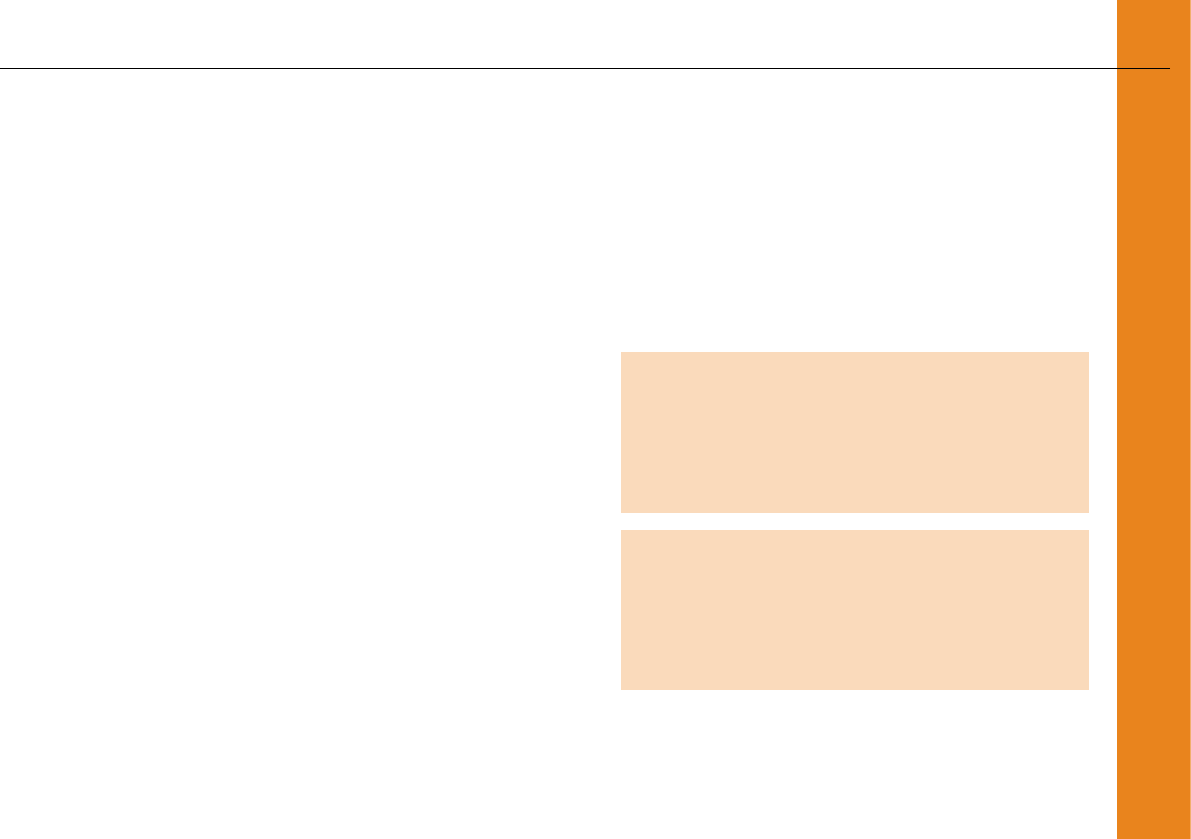
13
section 2. licences
MOTOR VEHICLE REGISTRY road users’ handbook
For your own peace of mind, important factors in selecting
a driving instructor include making sure the instructor
holds Professional Indemnity and Public Liability insurance
and is fully qualied to provide the training you seek.
It is important that you nd a driving instructor you are
comfortable learning with. If for any reason you are not
comfortable with your chosen driving instructor, you can
change instructors.
Supervised driving practice
While you are a learner driver, it is strongly recommended
that you get as much supervised driving practice as
possible before going out on the road solo.
Even if you are having professional driving lessons you
will benet from supervised driving between your lessons.
Ask parents, relatives or friends who are fully licensed to
take you out to practice each new driving skill. That way,
you can maximise the benets from each paid lesson and
minimise the cost of getting your licence.
The supervising driver must obey the following rules at
all times while the learner is driving the vehicle (including
parking practice):
• hold a current full driver licence (not provisional)
• be seated immediately next to the learner
• fully supervise the learner and take responsibility for the
learner’s actions—the licensed driver is deemed to be
the driver for most legal purposes.
• professional driving instructors must have a blood/
breath alcohol concentration (BAC/BrAC) of zero.
• fully licenced supervising drivers must have a BAC/
BrAC of lower than 0.05%.
Although there is no minimum number of supervised
driving hours required before a learner can get their
provisional licence in the NT, learners are encouraged
to get as much practice as they can before moving on to
driving unsupervised.
Learner drivers with 50 or more hours of
supervised driving practice reduce their
risk of crashing once they are on their
Ps by about one third.
Remember, your learner licence will
be suspended if you incur five or more
demerit points within 12 months, or 12
points within a three year period.
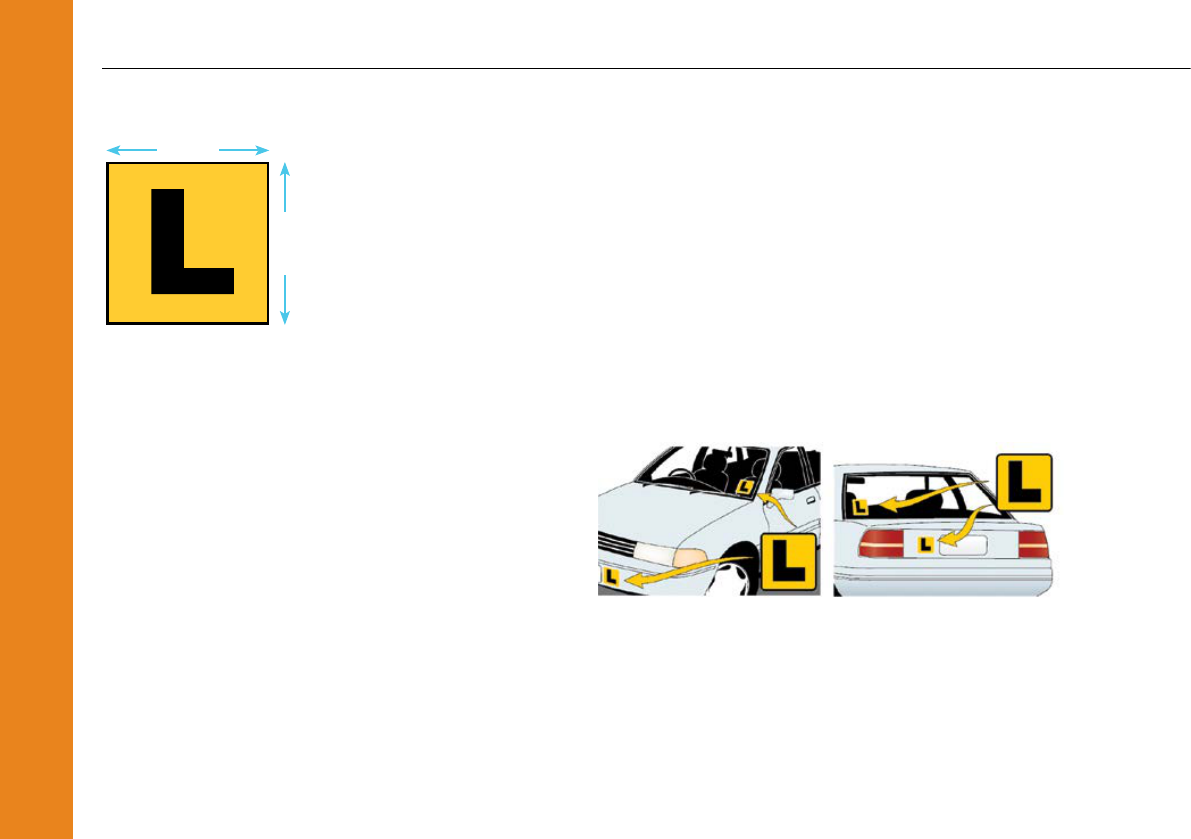
14 nt.gov.au
L plate rules
150 mm
150 mm
L plates consist of a black letter ‘L’ against a yellow
background. The minimum size for L plates is shown in
the diagram.
L plates must be displayed and clearly visible on the front
and rear of the vehicle (rear only for motorcycles).
If you are towing a trailer, an L plate must also be
displayed on the back of the trailer.
The L plates must be easily seen by other road users and
must not block or obscure the driver’s view.
It is recommended that L plates are displayed vertically
on the vehicle—not facing upwards on the bonnet or boot.
Brackets for mounting L plates next to the number plate
can be purchased at most automotive supply stores.
Roof-mounted L plates do not replace the L plates that
must be displayed at the front and rear of the vehicle.
Where an L plate is displayed in the window of the vehicle,
make sure that the angle of the window, any tinting or
louvers on the window or anything on the outside of the
vehicle (like spoilers or items in the tray of a ute) do not
obscure other road users clear view of the L plate.
L plates must not be displayed when the driver of the
vehicle is not a learner driver.
Appropriate placement of L plates on a car

15
section 2. licences
MOTOR VEHICLE REGISTRY road users’ handbook
How to obtain a class C provisional licence
To obtain a class C provisional licence (your ‘Ps’) you
must successfully complete a practical driving test. This is
a formal assessment to conrm your driving ability meets
the minimum requirements to drive unsupervised.
To attempt a practical driving test you must have:
• held your learner licence for a continuous period of at
least six months immediately prior to your test
• your current NT learner licence with you
• a registered and roadworthy vehicle of the correct
classication for the test.
The practical driving test
Getting your provisional licence is based on your ability to
demonstrate consistent and appropriate use of the system
of vehicle control.
You must understand the major controls of a motor
vehicle, complete a number of low-speed manoeuvres,
be safe and efcient while driving, have good observation
skills and be able to deal with hazards.
More information about the system of vehicle control and
the practical driving test can be found in the "Learner
Drivers' Guide" and "A Guide to the Driving Test". Both
publications are available online at nt.gov.au.
Where can I do my test?
You must attempt your practical driving test at a location
nearest to your usual place of residence. In special
circumstances, you can ask for an exemption from this
requirement if you can demonstrate an alternative location
within the Northern Territory; for example, if you are
studying or employed full time away from home.
When can I sit a test?
You can sit the practical test when you and your supervising
driver or driving instructor believe your driving skills are
adequate.
You must have held a learner licence for at least six
consecutive months before you can sit a practical driving test.
If either the driver or a passenger
of the vehicle does not have a working
seatbelt, the test cannot be conducted.
You must present your practical test sheet and learner
licence to the MVR to upgrade your licence to a
provisional before your learner licence expires.
Licence restrictions for provisional
class C drivers
In the Northern Territory, a provisional licence is for two
years (one year if you are 25 or older).
If at any time during your provisional period your licence
is cancelled, the full provisional period starts all over
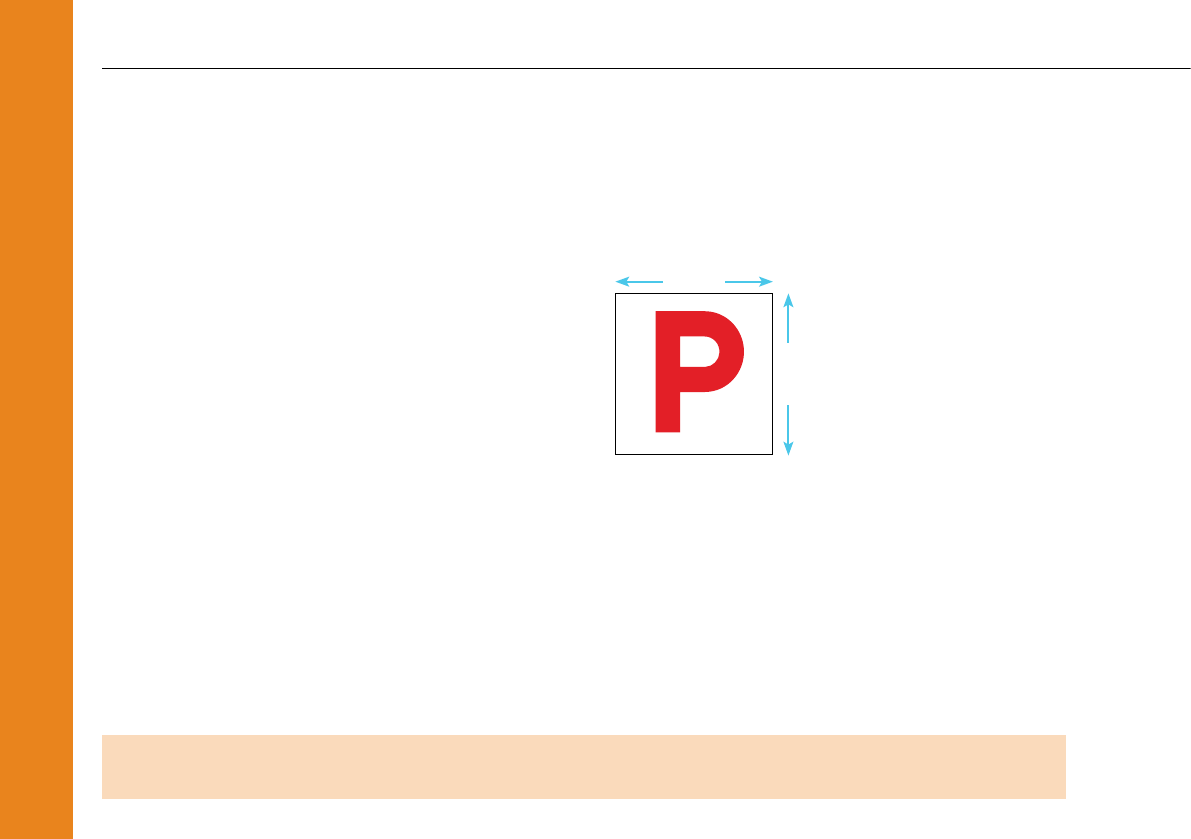
16 nt.gov.au
again on reissue. If your provisional licence is suspended,
the period of suspension will be added onto your
provisional licence period.
In some cases, the courts could order an additional
provisional period when the licence holder is convicted of
certain trafc offences.
As well as complying with all road rules and trafc laws,
there are additional conditions for provisional class C
licence holders:
• Blood/Breath Alcohol Concentration (BAC/BrAC):
Your BAC must be zero. This means you must not have
any alcohol in your system when you drive a vehicle.
• Displaying P plates: P plates must be clearly displayed
on the front and rear of the vehicle. The letter ‘P’ must
not be hidden. If towing a trailer, a P plate must also be
displayed on the back of the trailer.
• Licence: You must carry your provisional licence at all
times while driving.
• Mobile phone: You must not use any function of a
mobile phone or other communication device while
driving, including hands-free or loudspeaker options.
• Visual display unit: You must not drive a vehicle that
has a television or Visual Display Unit (VDU) operating
and visible to you or drivers of other vehicles.
• Seatbelts: You must make sure all people in the vehicle
are wearing seatbelts or approved restraints.
• Speed limit: You must not drive faster than 100 km/h,
regardless of the sign posted speed limit, and you must
observe the speed where it is below 100 km/h.
• Supervising a learner: You must not supervise a
learner driver.
P plate rules
150 mm
150 mm
A P plate consists of a red letter ‘P’ against a white
background. The minimum size for P plates is shown in
the diagram.
P plates must be displayed and clearly visible at the front
and rear of the vehicle (rear only for motorcycles).
The P plates must be easily seen by other road users and
must not block or obstruct the driver’s view.
It is recommended that P plates are displayed vertically
on the vehicle—not facing upwards on the bonnet or boot.
Brackets for mounting P plates next to the number plate
can be purchased at most automotive supply stores.
You are allowed to tow a trailer when on a provisional licence.

17
section 2. licences
MOTOR VEHICLE REGISTRY road users’ handbook
Where a P plate is displayed in the window of the vehicle,
make sure that the angle of the window, any tinting or
louvers on the window or anything on the outside of the
vehicle (like spoilers or items in the tray of a ute) do not
obscure other road users clear view of the P plate.
If you are towing a trailer, a P plate must also be displayed
on the back of the trailer.
P plates must not be displayed when the driver of the
vehicle is not a provisional driver.
Appropriate placement of P Plates on a car
If you pass your driving test in an automatic vehicle
If you pass your driving test in a vehicle with automatic
transmission, you can only drive an automatic vehicle
during the rst 12 months of your provisional licence. You
can drive a manual vehicle during this rst 12 months if
you are supervised by a full licence holder.You cannot
drive a manual vehicle unsupervised until the automatic
vehicle condition has been removed from your licence.
You can do this after 12 months at an MVR ofce.
If you want to drive a manual vehicle unaccompanied
before the 12-month period is up you must pass the
driving test in a manual vehicle with a foot-operated clutch.
Z BAC/BrAC (zero Blood/Breath Alcohol Concentration)
condition
After completing your provisional period, you must
continue to observe the zero Blood/Breath Alcohol
Concentration (BAC/BrAC) requirements for a further
12 months or until you turn 25, whichever is sooner.
Remember, your provisional licence will
be suspended if you incur five or more
demerit points within 12 months, or 12
points within a three year period.
For information about how to obtain your class R motorcycle riders licence, refer to the
Motorcycle Riders' Handbook.
